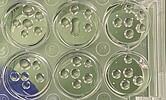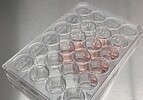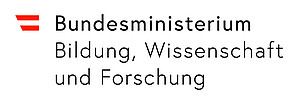Research projects
Energy metabolism and nutrient uptake of enterocytes after infection with C. parvum

Infection of calves with Crypotosporidium parvum is a widespread disease that causes significant losses, particularly in neonate animals, but it is also a zoonotic risk for humans. Fully effective therapeutic approaches are still lacking. In addition, little is known about the interaction between the host cell and the intracellular stages of C. parvum, which makes the development of new therapeutic approaches difficult.
We recently demonstrated significant changes in the expression of the glucose transporter (GLUT) 2 and glucose metabolism in infected enterocytes both in a cell culture model we established and in in vivo experiments. Given that both the host cell and C. parvum depend on an optimal energy supply to maintain their physiological barrier function and to advance the maturation of the proliferation stages, influencing epithelial glucose transport is a logical consequence. However, it is unclear how this regulation is initiated and whether it supports rather the host or the parasite, so that therapeutic implications also require further investigation. For this purpose, an in vitro model in the form of bovine enteroids will be established in which the cellular mechanisms underlying this adaptive response to the infection will be investigated in more detail.
Panacea butyrate? Evaluation of production, effects and therapeutic potential in the equine colon



The equine digestive tract is a complex, highly sensitive ecosystem and a common cause of serious, sometimes life-threatening diseases that are summarized under the term "colic". However, only limited therapeutic measures are known to prevent this disease or improve the survival rate. As with humans, the microbial colonization of the gastrointestinal tract has recently gained attention as an important factor for equine intestinal health. It is obvious that the products of the colonized bacteria (microbiota), the short-chain fatty acids, in particular, could have a protective effect.
Together with students from the Tullnerbach Agricultural College (Austria), the aim is to investigate how the microbiota of a healthy horse is composed, how it changes due to everyday influences and whether there is a connection between the SCFA produced and (intestinal) health.
In addition, the effect of SCFA on the intestinal epithelium of the horse are investigated and possible therapeutic strategies will be derived from this. For this purpose, an organoid culture from the equine large intestine is used, i.e. a modern method with which a pathological situation can be simulated and investiagted without animal testing on the "intestine in a Petri dish".
The project is supported by the Austrian Agency for Education, Science and Research and carried out in cooperation with the Vetmeduni Vienna.
Current information on the project is available in the Blog.
